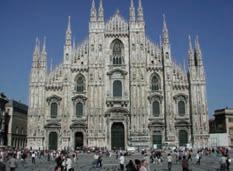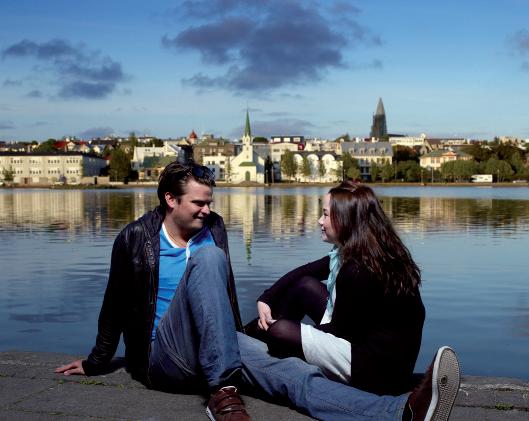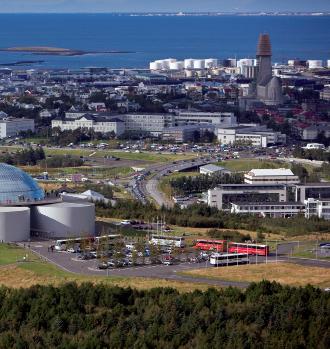
20 minute read
Beyond individualism
from TWSM#1
Economic downturn Sacrifices for the common good
CHINA Sacrifice for the common good, proactive and intense involvement by employees are some factors that characterise China’s business world. Top executives from Jesa, a consultancy firm based in Shanghai speak to Twsm regarding China’s response to the current economic crisis.
Advertisement

Beyond individualism

With more than 1.3 billion inhabitants, or 20% of world population, and an immensely wide territory, China cannot be considered one indistinct country when discussing the consequences of and responses to economic crisis. “To China’s south, the Pearl River Delta encompasses Guangzhou and is strongly linked to Hong Kong. The Delta is home to China’s export-oriented industries, in such areas as toys and textiles, and these are suffering because of the crisis. Up to 80% have experienced falls in their orders and many have already closed,” explain Saro Capozzoli, General Manager of Jesa, a firm headquartered in Shanghai and specialized in providing consulting services during the settlement phase of new plants. “In the north, around Beijing and Tianjin, many firms belong to the so-called ‘heavy industry’ sectors where the market has not stopped and there is continued business growth” adds Marco Gentili, Partner in Jesa. “In the Yangtze River Delta where Shanghai is located, this economic region is geared towards China’s domestic market and the impact of the global crisis is less serious”. Saro Capozzoli stresses, however, that the impact of the crisis is also uneven for different types of businesses even within these regions. “The crisis is more evident for the 630,000 foreign companies operating in China where the source of economic insecurity is external with their markets undergoing downturn,” he added. “For another part of the business community, they still see infrastructure continue to be built. For example, some 36 bridges were built in China in just the last three years.” At the end of 2008, China’s Central Government announced a massive $US750b stimulus spending package with a large proportion of funds going to expanding the country’s railway network and housing. China is where the globe’s fastest and arguably biggest rollout of 3G broadband services is currently taking place. “Chinese employees accept sacrifices for the ‘common good’ and everyone tries to work in a more effective way to obtain the best result”, Marco Gentili notes. “Many companies have reduced their expenses, especially on holiday festivities and everyone has accepted this situation, hoping for a change in the mid-term”. To boost consumer spending, the Government has given some signals that it would extend reform to its VAT system while tax reductions already underway have put more money into the bank accounts of China’s consumers and households.

MERITWINS In China, personal connections or ‘guangxi’ is an important first step towards finding potential business partners, clients and friends. Both Saro Capazzoli and Marco Gentili are at pains to point out that only meritocracy will enable this relationship to develop beyond this important means of introduction. “In modern China, people are managed in a flexible way and they feel free to move from one company to another one if their interests or ambitions are not met. A lot more young Chinese are exposed to the way the outside world works, and many of them have gone overseas to study” they add. “When they move up Maslow’s hierarchy of needs, people here are driven by status and that will determine which company they work for.” Regarding career matters, performance
Marco Gentili (L) Saro Capozzoli (R) Jesa Chairman and General Manager in Shanghai.
In China, the difference between time dedicated to work and personal time is still not that clear. In part, this is a culture that has emerged from centuries of agricultural cooperation, though this may well change as China continues to rapidly modernize.
remains core to effective professional cooperation and people are rewarded in ways commensurate to achievements and outcomes. “Like elsewhere in the modern world, companies need to pay a lot of attention to rewarding employees who are innovative, whether it is through finding solutions to problems or coming up with new and successful products for the marketplace.” “Efficiency depends on transparency, leadership and participation by all in the company,” Capazzoli explains while noting some difference in the Chinese workplace. “The difference between time dedicated to work and personal time is still not that clear in China. In part, this is a culture that has emerged from centuries of agricultural cooperation, though this may well change as China continues to rapidly modernize.” •

By MARIA TERESA MELODIA
Thinking outside the box Animal spirits
FINANCE DRAWS ON PSYCOLOGIC AND ETHOLOGIC MODELS Today everybody wants to know about the current economic and financial crisis. Governments all over the world are working to try to solve the crisis, even with sometimes unconventional but innovative approaches that draw attention to parallels between the financial and the natural world.
An unexpected affair
The global crisis has made clear that psychological forces are influencing the wealth of nations. As the economists George A. Akerlof and Robert J.Shiller stress in their book “Animal Spirits”, noneconomic motives are driving financial events worldwide. These two acclaimed experts highlight the fact that economic decisions are affected by people’s impulses and emotions, the so-called ‘animal spirits’. Five different examples of ‘animal spirits’ that they point out include confidence, corruption, money illusion, stories and fairness. It is not only the study of human psychology which offers useful lessons on how to manage systemic financial risk. The field of ethology may also prove useful. A few months ago Mervyn King, the Governor of the Bank of England, sought advice from Lord Robert May, a zoologist, Professor at Oxford University, a recent President of The Royal Society, as well as a past Chief Scientific Adviser to the Uk Government.
GOOD REASONSTOTHINK ABOUTTHE BIRDS AND BEES Mervyn King was right in his thinking about ethology, the scientific study of animal behaviour alongside other subjects like zoology, epidemiology or ecology. “There is a common ground for analysing financial systems and ecosystems, especially in the need to identify conditions that dispose a system to be knocked from seeming stability into another, less happy state,” noted Nature, the international weekly journal of science. In February 2008, Nature published a paper “Ecology for Bankers”, co-authored by Lord Robert May, Simon A. Levin and George Sigihara who argued that the management of fishery stocks provides some ideas on managing the financial system. According to Simon A. Levin, Professor in the Department of Ecology and Evolutionary Biology at Princeton University, the field of ecology might offer useful lessons about how to manage systemic financial risk. “The animal kingdomas professor Levin clarifies-gives us some tips about collective behaviour and about contagious spread. People, like other animals, imitate one another, leading to herd-like behaviour and the stock-market provides much evidence of this. Moreover, behaviours spread, like infectious diseases or forest fires.”
INTERDISCIPLINARY APPROACH One lesson of the recent banking crisis is that too much attention was focused on monitoring individual banks, without considering how they might interact. As May, Levin and Sugihara note “for the past half-century, investments in fisheries science have focused on management on a species-by-species basis (analogous to single-firm risk analysis). Especially with collapses of some major fisheries, however, this approach is giving way to the view that such models may be fundamentally incomplete, and that the wider ecosystem and environmental context (by analogy, the full banking and market system) are required for informed decision-making.”
HOMOLOGATION MEANS EXTINCTION The Bank, for its part, is already trying to extend the lesson about fish to contagious diseases and its implications to the banking system. In April 2009 in Amsterdam, Andrew Haldane, Executive Director of the Bank of England’s Financial Stability Unit, published a paper comparing the Sars (Severe Acute Respiratory Syndrome) epidemic and the recent collapse of Lehman Brothers. He noted that the dynamics of the modern financial network make it both ‘robust and fragile’, a property exhibited by other complex adaptive networks, such as tropical rainforests. While the financial network looked diversified, individual finance houses had pursued strategies uncannily similar to each other – meaning that all were vulnerable to collapse once the system reached a ‘tipping point’. He concluded that if future systemic dislocations are to be averted, financial regulators might do well to examine three areas which were the cornerstones of the effort in responding to the Sars outbreak in 2003. The first initiative is to gain a better understanding of network dynamics, which in the banking field translates to a mapping of the global financial network and communicating to the public about how it works. The second response is to ensure appropriate control of the failure of large interconnected institutions. Thirdly, a restructuring of financial networks could learn from the experience of engineering networks. The widespread implementation of ‘central counterparties’ and ‘intra-system netting arrangements’ would artificially reduce the tendency towards system homogeneity or movement towards the tipping point. When interviewed by Twsm, Professor Levin further notes that the analogy between financial systems and fish, tropical trees or pestilent diseases might also be fitting to other aspects of social systems. “Collective behaviour and contagiousness lead to the rapid spread of fads and to changing attitudes towards things like smoking or birth control” says Levin. “We are in front of an umpteenth proof that we’d better listen more to nature” he concluded. •
A glance on the city Cities’ appeal
By FILIPPO DE BORTOLI
CITIES While governments at all levels worldwide compete to improve their cities’ quality of life, their planning agencies draw on experts who advise on those elements that determine a city’s ‘liveability’. Filippo de Bortoli gives Twsm readers a quick guided tour of the globe’s new lifestyle locations of choice.
Finding best location
Towards the end of May 2009, news went around the world that Times Square would become a traffic island. With a popularity-seeking decision, and elections approaching, New York’s Mayor Michael Bloomberg announced that Broadway will be pedestrianized for five city blocks around the crossroads where 350,000 people pass through everyday. To the rest of the globe, this is where the Ball is dropped to mark New York’s celebration of every New Year. Bloomberg’s is a welltrodden path to make the Big Apple, ‘The City’ by definition in the modern collective imagination, even ‘greener’ and ‘people-friendlier’. A traffic ban along Broadway will allow restaurants and cafes to put tables on the sidewalks, significantly slowing the pace of an area that is already clustered with theatres, bars and other places devoted to leisure activities. In a metropolis that doesn’t’ really have the ‘square dimension’, the initiative’s goal is to give city dwellers a place of their own, enlivened by music, cultural and
artistic occasions, with events to be enjoyed with the due comfort. Less noise, fewer risks for pedestrians (Times Square unfortunately has an average rate of car accidents which is 40 % higher than other areas of the city) and therefore the quality of life in this area will also bring an undisputed advantage to the whole city. The special placement of Broadway, which cuts diagonally across the orthogonal subdivisions of surrounding streets, often results in traffic gridlocks. This new step made by Mayor Bloomberg’s administration for a greener New York includes, amongst other things, ambitious plans for the planting of a million trees across the city. It is emblematic of the positive competition which for some time has been underway between (aspiring) ‘world cities’. The scale of the competition varies, involving governments at the local, metropolitan, provincial, regional as well as national levels. They encompass projects that are either catalysed by local business or community associations, and range through to integrated infrastructure and investment partnerships with giant national or multinational corporations. For example the European Union has allocated ¤ 6.3 million between 2007 and 2013 to the Wilhelmsburg area with the goal of renewing this part of Hamburg. For one week every year, entire areas of Milan are taken over by a diverse number of firms, trade exhibitors, promotion agencies, non-profit artistic and other community groups during its Furniture Fair which, during 2009, attracted more than 330,000 visitors from over 150 countries around the globe. Following on from the 2009 Beijing Olympics where as much as $US40 billion was spent, Shanghai, China’s largest city is reportedly spending as much and using its hosting of the 2010 World Expo to catapult itself into Asia’s pre-eminent financial capital and world city. As the New York Times recently reported: “By the time the six-month-long exposition opens next May, Shanghai will have two new airport terminals, a subway
system that is nearly as large as New York’s and a $700 million promenade in its historic riverfront district. New parks, roads and bridges are already opening.” (Nyt, 30 May 2009) Cities transform at differing speeds but increasingly, many are being included in charts, tables and rankings developed globally from a range of consulting agencies such as Mercer to publications such as The Economist or Forbes magazines. Surveys carried out by influential scientists, such as Peter Taylor and Saskia Sassen, also envelop more and more locations as they seek to understand economic professional, and increasingly non-economic factors that determine the desirability of regions and cities as places to visit, invest or live in.



02 03
Milan by choice
With a region enhancement plan with the ambitious goal of 2030, Milan has identified 15 big “comfort” indicators.

1. To create a new balance of functions between the centre and suburbs. 2. To modernise the public and private transport network. 3. To increase the amount of housing available. 4. To encourage the presence of workers and creative people in the services sector. 5. To enhance the identity of neighbourhoods. 6. To promote Milan as an agricultural city. 7. To connect existing environmental systems to new major parks. 8. To restore the environmental function of waterways and canals. 9. To complete the redevelopment of contaminated or abandoned land. 10. To support the European
Union’s “20-20 by 2020” energy-efficiency policy on a town-planning, building and logistical level. 11. To set up quality services for people on a neighbourhood scale. 12. To make the city liveable on a 24-hour basis. 13. To reinforce the landscaping system on a local scale and
“slow” mobility. 14. To guarantee the quality and maintenance of public spaces and service structures. 15. To encourage private services of public interest to the principle of full subsidiarity.



12 05 06



09 04
08 07

10 01 Baltimore Harbour Munster, Cork, Ireland. 02 The Dome, Milan, Italy. 03 Reykjavik lanscape and city, Island. 04 Reykjavik lake, Island. 05 Fashion window Via Montenapoleone, Milan, Italy. 06 Teatro La Scala, Milan, Italy. 07 Reykjavik Cultural Night, Island. 08 Clifden, Connought,Galway. 09 The Burren, Munster, Clare, Ireland. 10 Aran, Connaught, Galway, Ireland. 11 North of Bantry Munster, Cork, Ireland. 12 Clare Glen, Ulster, Armagh, Ireland.
© Many Thank’s: Tourism Ireland


02


01 Wilhelmsburg, the Worldneighbourhood. © Courtesy of bloomimages 02 Oslofjord, Norway. 03 Oslo, Norway. 04 Smart Price Houses, Center of Wilhelmsburg, Hamburg, Germany. 05 Oslo city center, Norway © Kurt Hamann/Innovation Norway. 04
05 What does appeal a perfect city?
Do you have clear, objective information on quality of living differences between cities around the world? Are your allowances based on significant international quality-of-living factors? Based on 39 factors within ten categories, Mercer’s Quality-of-Living Reports contain all the key elements you need to calculate hardship allowances for transfers to over 420 cities worldwide. Here there are mercer,com 10 reference categories:
• Consumer goods • Economic environment • Housing • Medical and health considerations • Natural environment • Political and social environment • Public services and transport • Recreation • Schools and education • Socio-cultural environment

03
These qualities of attractiveness also extend to encompass the civic, cultural and the personal. For most, one’s location in a country, region or city is still more or less determined by family history and circumstances of birth while for an increasing number, it is an expression of professional or personal preference, including those associated with identity politics. The more striking examples include the significance of San Francisco or Sydney to global gay identity, or of Paris as a cultural hub for the diverse and multiple diasporas of (Francophone) Africa and the Middle East. Amongst the different categories that make up our modern life, however, the factors making the difference is more often between the ‘small’ things that give us the biggest satisfaction. These are the borders along which we, along with work style, narrate our lives and are conscious that what we • decide to do in our free time is what matters the most to us.
By PAOLO GLISENTI
Events Expo
At the end of March 2008, Milan was announced the winner in its bid, following Shanghai in 2010, to host the 2015 World Expo. With its theme of “Feeding the planet, energy for life”, Paolo Glisenti outlines to Twsm the exciting decade that is ahead for Milan.
Expo and work
Milan beat the other candidate Izmir, a city in Turkey for the chance to host what is arguably the third largest event in the world in terms of economic and cultural impact. On its bid website, the Milan submission to the BIE (International Exhibitions Bureau), reasoned that: “Milan and its territory represent the ideal candidate, in Italy and in the world, for Expo 2015 because together they: -are situated at the centre of an area of about 10 million inhabitants, the same as London or Paris; -produce 10% of Italy’s GDP, a lev-
el equal to Brussels’ or Madrid’s, and have a per-capita income that is almost twice, and unemployment that is half that of Italy’s; -register 40% of new innovation patents equal to Boston’s; -sell 10 million tickets yearly for art, music and cinema, a proportion that is equivalent to Berlin, Amsterdam or Barcelona; -house 650 fashion show-rooms, in competition with Paris and New York, and is the Italian centre for voluntary services and tertiary industries.” In preparing for Expo 2015, ¤ 2,300 million will be invested by the Italian and local governments, and the private sector to prepare the site and construct the necessary facilities. Moreover, investments in transportation infrastructure by public and private organisations are estimated to total ¤ 7,300 million while 21 million

Siviglia 1992 1
tourists are expected to visit the event. For Milan to organise such a global event is a unique chance to create thousands of new jobs in the Expo area, to attract the most talented people from abroad and to raise the quality of its already globally-recognised skills base, particularly in the area of style and manufacturing design. Human capital creation will be the most precious legacy of an Expo that can achieve the most enduring impact among other sport or cultural events because of its duration of six months
and the permanent infrastructure that is require all over the city well beyond the exposition area. Construction of the Expo site will generate many direct and indirect jobs. These are, to a great extent, ‘traditional’ engineering and building construction opportunities. The Expo also generates demand for more environmentally-friendly building techniques and materials and their integration with advanced energy-saving technologies and systems. These will provide contractors and suppliers with the chance to move up the technological ladder. Expo will also offer extraordinary opportunities for architects, planners and designers to be indissolubly associated with the iconic architectural and other visual representations the Milan of 2015 (and beyond) will project to the globe. The bidding process amongst architects, designers, and urban developers will not only generate new innovations relevant to the Expo’s theme of energy and food sustainability. Participation in these competitive bidding processes will also infuse young professionals with a skill set which they will take with them in professional life well beyond the Expo and 2015. The Expo will also require skills in the organising and logistical support of events with its demand for a range of associated professions encompassing communications, advertising, market-
ing, sales, accounting, legal and administration. During preparation, creative talent, technicians, clerks and interns will be recruited and trained and will be expected to join organizational committees and the events management teams. What is offered to new recruits is not only the chance of a (well-paid) job, but also the opportunity to gain an exciting lifetime experience. Current surveys point out that the local job market does not have enough professionals required for these projects. Milan, therefore, is now open to those, who are willing to move to seek these professional opportunities. Finally, this talent cross-fertilisation works both ways. Experience in working in Milan in general and for the 2015 World Expo in particular will be an ex• citing opportunity in participants’ work and personal lives.
Suisse 2002 2 Hannover 2000 3

Photo from the book “Expo before Expo” 1 Avenida de las palmera 2 Bienne 3 Dutch pavilion
Legal Borderlands
THINKING OVER Twenty African immigrant men of varying ages sit at a twelve metre long transparent table creating an image that is reminiscent of da Vinci’s “The Last Supper”. These men are wearing elegant and formal black dinner jackets that are deliberately made dusty, ill fitting and torn. Some are inappropriately shod, or are not wearing shoes at all. They eat whole pieces of chicken without cutlery in complete silence. This piece of performance art conveys sacredness while directing us to the hash reality that these men experience every day. The turmoil of immigration is central to “VB65”, the name which Vanessa Beecroft sequentially gives to each of her performance art installations. VB65 took place at the Pavilion of Contemporary Art in Milan during March this year. The diners sit down silently during the three-hour performance, in front of an audience of invited guests. They are real immigrants-some legal, others not-who have arrived in Italy from Africa. They were asked to work for two full days and to take onboard the concept of the performance, Meeting with the different imagery and metaphor which the artist sought to communicate. The performers do not break their silence, or the tension between them, as the sole means with which to engage the audience.

*VB65 was produced by the Milan Commune Arts Office and MiArt (Milan’s International Modern and Contemporary Art Fair) exclusively for PAC, Padiglione d’Arte Contemporanea.

